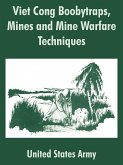America's entrance into the wars in Vietnam came as a result of several factors. Among them was the necessity of bolstering French influence in the area in the face of mounting communist expansion. This expansion was intensified by the outbreak of the Korean War, making it necessary for the United States to revamp its Southeast Asian policy. During the French era, control of Vietnam's rivers, streams and canals became necessary. This led various factions to develop specialized military units heavily dependent on new types of river craft that could traverse the myriad waterways in Vietnam. The focal point of this study is a new assessment of the conduct of river warfare. Drawing on little-known French, Vietnamese and American sources and materials, it sheds light on an important aspect of the Vietnam War. Chapters also detail numerous aspects of river warfare not generally covered in other books on the subject.








